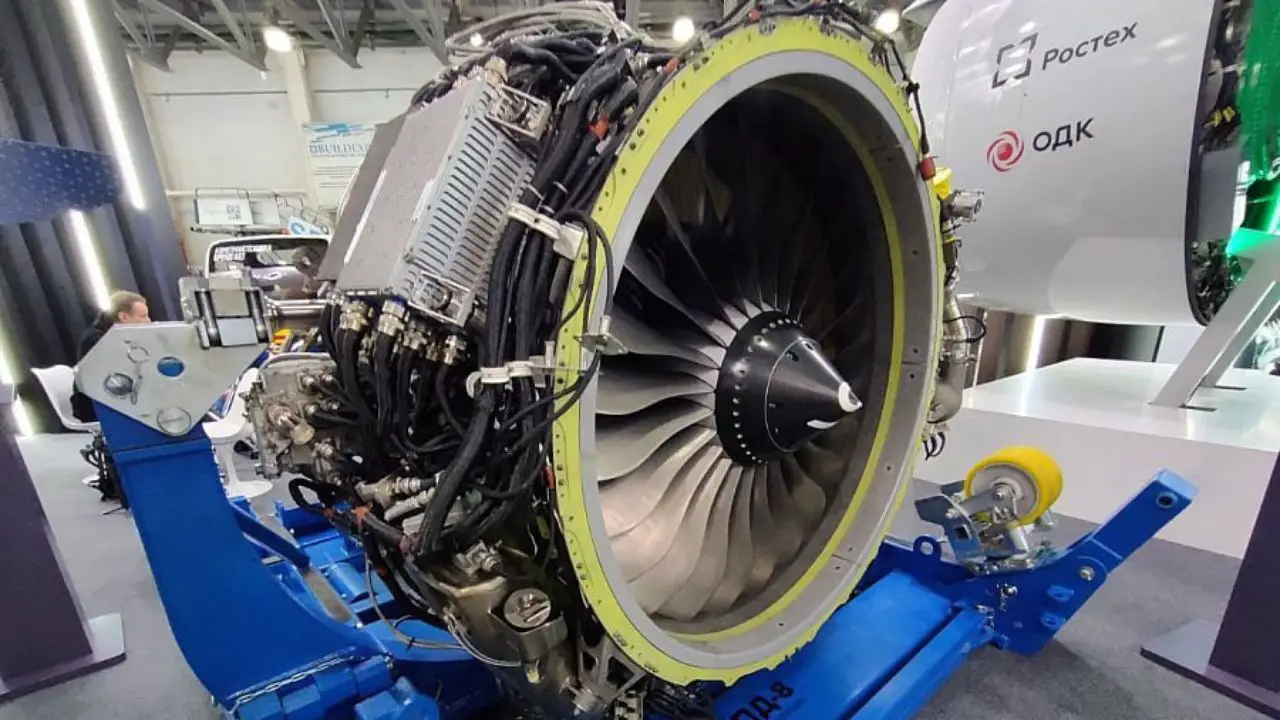In the intensely competitive commercial aviation industry, airlines, particularly low-cost carriers, are perpetually in pursuit of strategies to reduce operational expenses. These carriers’ business model is based on the reduction of both direct expenditures, such as fuel and maintenance, and indirect costs, such as aircraft downtime. Particularly for operators who price tickets with razor-thin margins, even the slightest enhancements in efficiency can have a substantial impact on profitability. The adoption of new, more efficient aircraft engines is one of the most effective strategies for attaining these savings. In addition to reducing operating costs, improved fuel efficiency and reduced maintenance requirements enable airlines to offer more competitive fares and increase aircraft utilization, which is essential in the low-cost segment.
Russian Innovation for the SJ-100: The PD-8 Engine
The official presentation of the PD-8 aircraft engine by the state corporation Rostec and the United Engine Corporation (UEC) was a significant event at the “Innoprom-2025” international industrial exhibition in Yekaterinburg. The PD-8 aircraft engine’s exclusive footage, albeit without its nacelle, was also released. The PD-8 project’s technological advancements were underscored by this uncommon behind-the-scenes glimpse, which enabled industry professionals and the public to closely examine the engine’s design and engineering details. This level of transparency is unprecedented in the industry and serves as a testament to Rostec’s assurance of the new engine’s performance and construction.
The decision to exhibit the engine without its nacelle served various purposes. It illustrated the profundity of Russian domestic engineering and the absence of foreign-made parts, which is a critical point in the context of ongoing import substitution, by providing a clear view of the core components and integration work.
The PD-8 is a significant milestone in Russia’s ongoing activities to attain technological self-reliance in civil aviation. The PD-8 is a significant departure from Western engine technology, as it is specifically engineered for the import-substituted SJ-100 “Superjet” and the upgraded Be-200 amphibious aircraft. The localization of critical aviation components has become a strategic necessity for Russia as a result of the recent geopolitical climate and the imposition of unilateral Western sanctions. This development is particularly germane.
Technological Advancements and Key Features
The PD-8 engine’s enhanced fuel efficiency was one of the most notable features that was emphasized during INNOPROM-2025. In comparison to comparable models, the engine exhibits a fuel consumption reduction of approximately 2 to 5% during the cruise. However, the officials did not mention the engine being compared to. This increase directly translates into substantial cost savings over the lifespan of an aircraft for airlines, particularly those that operate on thin margins. In addition to reducing direct operational expenses, reduced fuel consumption also contributes to a smaller environmental footprint, a growing concern in the global aviation industry.
Another remarkable feature of the PD-8 is its rapid development. Rostec emphasized that the engine was developed from concept to production readiness in just over five years, which is approximately half the global average for similar initiatives. This rapid development cycle emphasizes Russia’s pressing need to supplant foreign-made engines and illustrates the country’s expanding engineering capabilities in response to external pressures.
The PD-8 is also equipped with advanced thermoplastic composite materials, which were demonstrated by UEC at the exhibition. These materials contribute to a lighter engine, which in turn enhances fuel efficiency and reduces overall operating expenses. Furthermore, thermoplastics facilitate speedier manufacturing cycles and provide benefits in terms of recyclability and maintenance, thereby promoting economic and environmental sustainability.
The PD-8 has already accumulated over 3,500 flight hours during certification tests in 2025, which is indicative of its reliability and readiness. The engine’s efficacy is assured by this rigorous testing regimen, which also facilitates its introduction into commercial service.
Market and Production Prospects
In the future, the PD-8 is expected to be mass-produced in 2025. UEC has declared its intention to manufacture 30 engines in the initial year, which will adequately equip 17 aircraft. Nevertheless, the domestic market’s requirements are significantly greater, with an estimated demand of several hundred aircraft per year. To address this challenge, UEC will need to rapidly increase production, with the objective of producing at least 100 engines per year for a particular type.
The Russian aviation industry is strategically impacted by the PD-8’s deployment. The primary impediment to the expansion of the proportion of domestically manufactured airliners has been the production of engines. Russia not only fortifies its position in the global aviation market but also enhances its technological independence by surmounting this obstacle. The PD-8’s development and production are therefore regarded as critical accomplishments, as they contribute to the long-term sustainability and economic competitiveness of the civil aviation sector of the nation.
Official Website of Youtube Channel – Altitude Addicts
